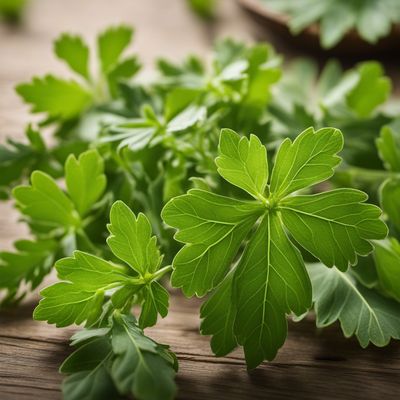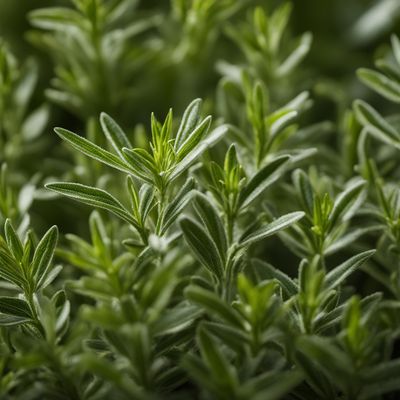
Ingredient
Wormwoods, dry
The Bitter Herb: Wormwoods
Wormwoods, dry, also known as Artemisia absinthium, are perennial plants with silver-gray leaves and a strong, bitter taste. They have a pungent aroma and are often used in herbal liqueurs, bitters, and traditional medicine. The leaves are typically dried and used in small quantities due to their intense flavor.
Origins and history
Wormwoods have a long history of use in traditional medicine and culinary applications. They were historically used to make absinthe, a highly alcoholic beverage popular in the 19th century. Wormwoods are native to Europe, Asia, and North Africa and have been cultivated for centuries for their medicinal properties.
Nutritional information
Wormwoods are low in calories and are a good source of antioxidants, vitamins, and minerals. They contain compounds like absinthin and anabsinthin, which contribute to their bitter taste and potential health benefits.
Allergens
Some individuals may be allergic to wormwoods, especially those who are sensitive to plants in the Asteraceae family, such as ragweed or daisies.
How to select
When selecting dry wormwoods, look for leaves that are intact, dry, and have a strong aroma. Avoid any signs of moisture or mold. It is best to purchase from reputable sources to ensure quality and authenticity.
Storage recommendations
To maintain the freshness and quality of dry wormwoods, store them in an airtight container in a cool, dark place. Avoid exposure to moisture or direct sunlight, as it can degrade the flavor and potency of the herb.
How to produce
Wormwoods can be grown in well-drained soil and full sun. They are relatively low-maintenance plants and can be propagated through seeds or cuttings. However, it is important to note that wormwoods can be invasive in certain regions, so it is recommended to check local regulations before planting them.
Preparation tips
Dry wormwoods can be used in various culinary preparations, such as infusions, tinctures, and herbal liqueurs. They are commonly used to add a bitter and herbaceous flavor to cocktails, especially in traditional absinthe recipes. Additionally, they can be used in herbal teas, marinades, and as a seasoning for roasted meats and vegetables.
Culinary uses
Dry wormwoods are primarily used in herbal liqueurs, such as absinthe, vermouth, and bitters. They are also used in traditional medicine for their potential digestive and anti-inflammatory properties.
Availability
Wormwoods are commonly available in Europe, Asia, and North Africa. They are cultivated in countries like France, Italy, Spain, China, and Morocco.
More ingredients from this category » Browse all

Sweet cicely, dry
The Delicate Herb: Sweet Cicely

Sage, dry
The Timeless Herb: Unveiling the Versatility of Dry Sage

Rosemary, dry
"The Fragrant Herb: Unveiling the Secrets of Dried Rosemary"

Lovage, dry
The Aromatic Herb: Lovage

Balm leaves, dry
The Soothing Herb: Balm Leaves

Savory, dry
Umami Delight

Celery leaves, dry
The Flavorful Herb: Dry Celery Leaves

Hyssop, dry
The Aromatic Herb: Unveiling the Secrets of Dry Hyssop

Fennel, dry
The Fragrant Spice of the Mediterranean

Thyme, dry
The Essence of Thyme: A Versatile Herb

Lavender, dry
The Fragrant Herb: Lavender

Tansy and related species, dry
The Golden Herb of Ancient Times